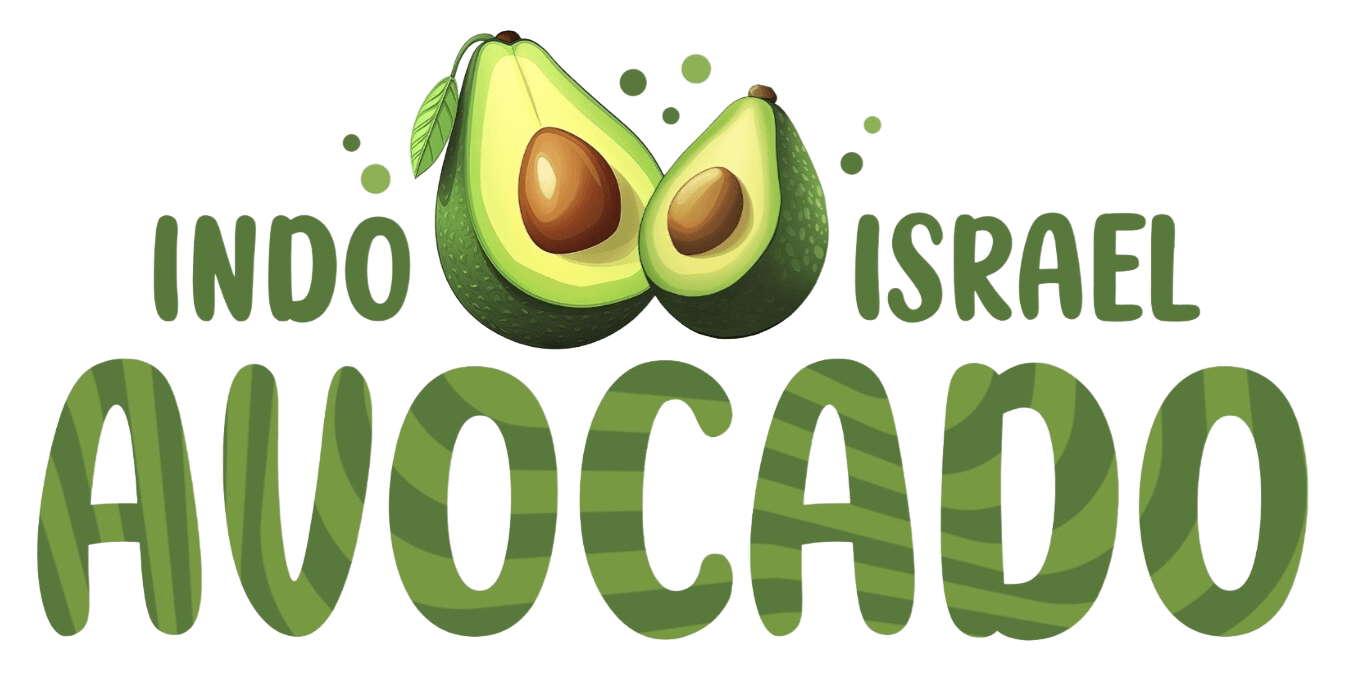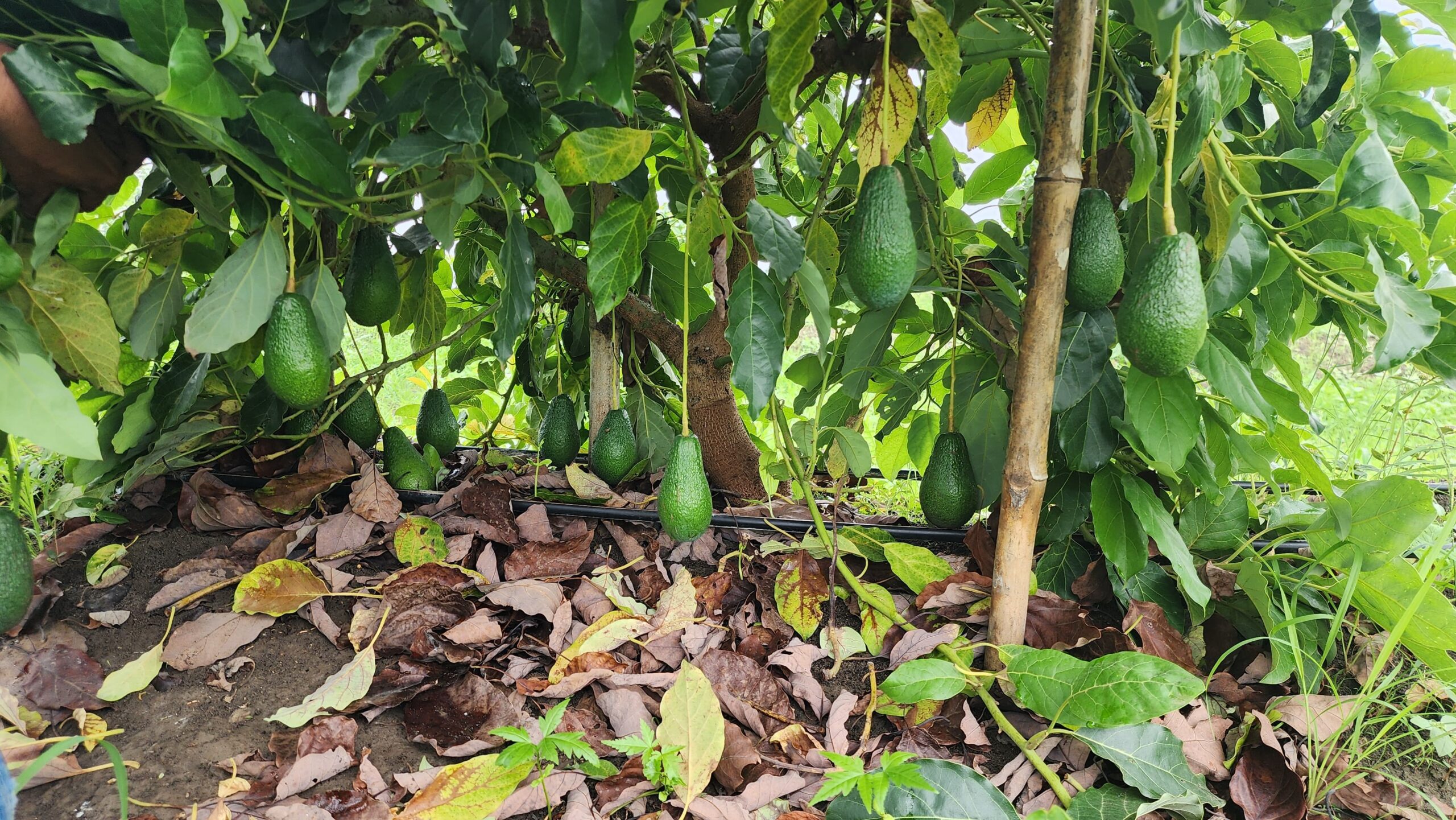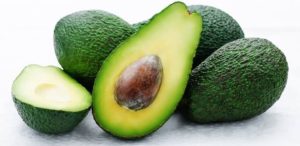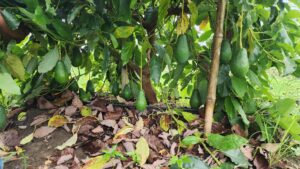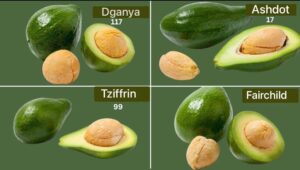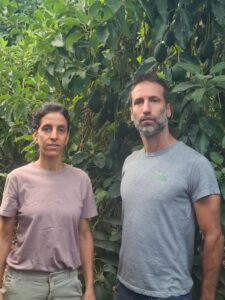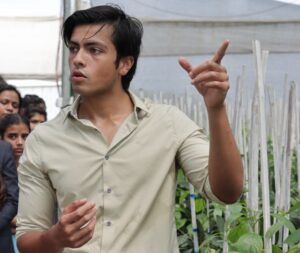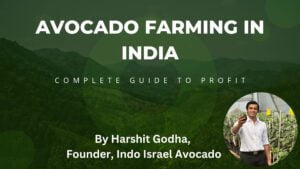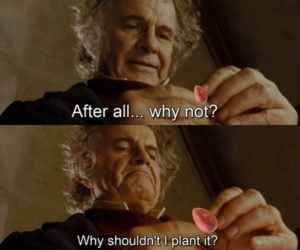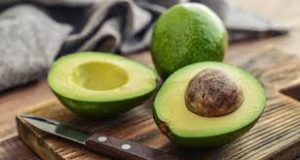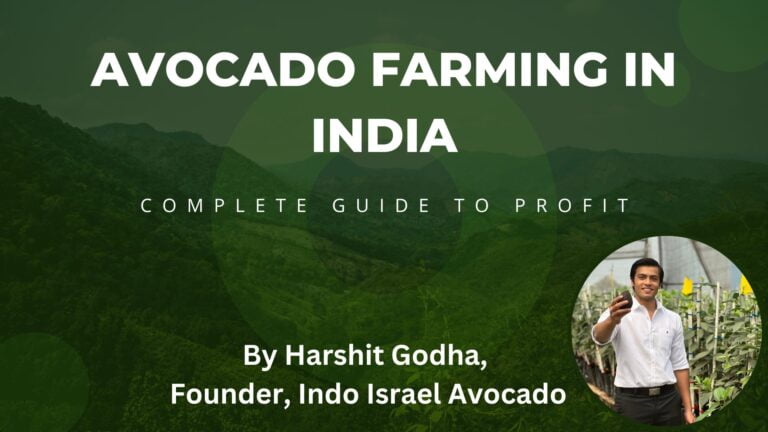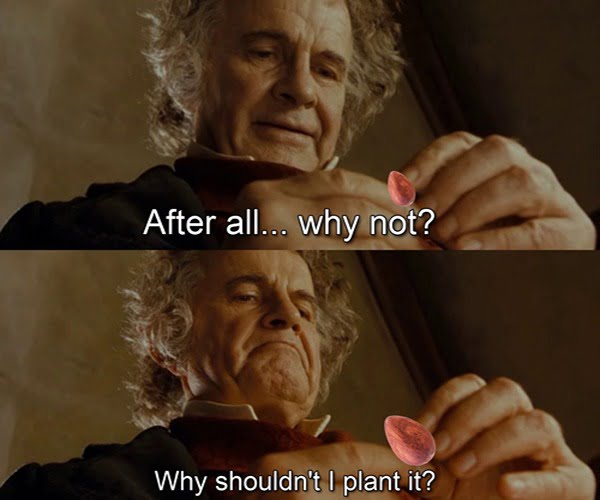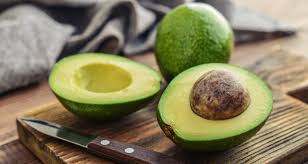The fruit I am holding in my hand is a Pinkerton affected by Anthracnose. This is a picture from my last year’s harvest. Pink spores appeared after the ripening. It was hard to tell what the problem was when the fruit was unripe.

Anthracnose is caused by Colletotrichum gloeosporioides or Colletotrichum acutatum (Schaffer, Wolstenholme, & Whiley, 2013).
Conditions favoring infection:
- Humid, wet, or foggy weather.
- Warm temperatures especially around 24°C during monsoon.
- Poor air circulation in dense canopies.
- Prolonged rainfall or wet harvest conditions.
Spores are spread by splashing water, and infection can occur anytime from fruit set to harvest. Cold temperatures <15°C slow disease progression.
Symptoms & Signs
- Pre-harvest:
- Small (<5 mm), brown-to-black lesions around lenticels on fruit skin.
- Lesions may remain unnoticed while the fruit is still on the tree.
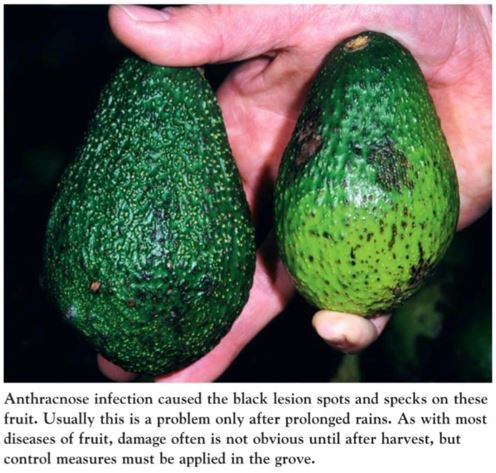
- Post-harvest (more serious):
- Lesions enlarge and darken.
- Black spots or sunken areas develop and coalesce.
- Internal flesh shows rot that is hemispherical.
- In advanced decay, the pulp becomes soft and putrid.
- Pink spore masses or slimy pink growth may emerge under wet storage conditions. This was how I was 100% sure it was Anthracnose. You can see the pink/salmon-coloured spores in the picture below.

Why is it serious?
Spores often infect unripe fruit on the tree, but rot symptoms develop only after ripening. You can get away with it by rapid cooling at 5 degrees Celsius. But it will only delay the problem and pack house will have to deal with it later. You can lose your credibility as a reliable farmer if you don’t take precautionary steps before hand. It is the most serious post-harvest disease of avocado in high rainfall growing regions.
Pre harvest Solution
- Prune lower branches and leave at least 2 feet (60 cm) between the ground and the lowest limb in order to improve air circulation and thus reduce humidity within the canopy (Dreistadt, 2008 p.81).
- Use copper-based fungicides, like copper oxychloride, copper hydroxide or copper oxide every 15-25 days from fruit set to harvest (Peterson and Inch 1980; Hartill et al. 1990; Hartill 1991).
- Couple it with Strobilurin based fungicide, Azoxystrobin (Willingham et al., 2001). Available in India under the trade name Ortiva by Syngenta. However, to mitigate the development of strobilurin resistant strains of the pathogen in your orchard, do NOT over use it, ideally couple it with your copper spray program.
Post harvest Solution
- Prochloraz is an effective fungicide for post-harvest Anthracnose control (Muirhead et al., 1982; Darvas 1985). Available under the trade name Sportak by BASF.
- Reducing ripening time through ethylene reduces Anthracnose incidences post harvest (Darvas et al., 1990; Hopkirk et al., 1994).
- Cool store at 6-degree Celsius and ripen with Ethylene at 25 degrees Celsius (Hopkirk et al., 1994).
Biological solution
- Bacillus subtilis, a bio control agent available under the trade name Serenade by Bayer Crop science is somewhat effective in controlling against Anthracnose (Korsten et al., 1989, 1991).
- However, it works best as a preventative treatment in your overall spray program.
Rootstock Solution
- Velvick rootstock from Australia might offer some resistance to Anthracnose (Coates et al., 2011). However, good luck importing avocado plants from Australia, they cannot provide a bullet-proof phytosanitary certificate.
Thank you,
Kind regards
Harshit Godha

P.S – If you want learn how to fertigate your avocado plants, I will be launching the course by August. It will be offered at a discounted rate to the first 100 customers and then the price would go up.
Since you didn’t ask – You can buy the book Integrated Pest Management for Avocados by Steve H. Dreistadt on Google play books and search for the specific pests and diseases to find control strategies.
References
Coates, L. M., Dann, E. K., Shuey, L. S., Smith, L. A., Dean, J. R., Cooke, A. W., Pegg, K. G., Hofman, P. J., Marques, R., Stubbings, B., & Whiley, A. W. (2011). Effects of rootstock on avocado fruit quality – assessment of postharvest disease, major cations and biochemical traits. In Proceedings of the 7th World Avocado Congress. Cairns, Australia.
Darvas, J. M. (1985). ULV Application of Systemic Fungicides for the Control of Postharvest Avocado Diseases. SAAGA Yearbook, 8, 46–47.
Darvas, J. M., Kotzé, J. M., & Wehner, F. C. (1990). Effect of post-harvest treatments on the incidence of diseases of avocado fruit. Phytophylactica, 22, 93–96.
Dreistadt, S. H. (2008). Integrated Pest Management for Avocados (UC ANR Publication 3503, p. 81).
Hartill, W. F. T. (1991). Post harvest diseases of avocado fruit in New Zealand. New Zealand Journal of Crop and Horticultural Science, 19, 297–304.
Hartill, W. F. T., Fowler, M., Sale, P. R., & Sawden, D. S. (1990). The effect of copper sprays and dead wood removal on the incidence of postharvest rots. Scientific Research and Technical Supplement No. 7, 4–6.
Hopkirk, G., White, A., Beever, D. J., & Forbes, S. K. (1994). Influence of post harvest temperatures and the rate of fruit ripening on internal post harvest rots and disorders of New Zealand ‘Hass’ avocado fruit. New Zealand Journal of Crop and Horticultural Science, 22, 305–311.
Korsten, L., Bezuidenhout, J. J., & Kotzé, J. M. (1989). Biocontrol of avocado postharvest diseases. South African Avocado Growers’ Association Yearbook, 12, 10–12.
Korsten, L., de Villiers, E. E., de Jager, E. S., Cook, N., & Kotzé, J. M. (1991). Biological control of avocado postharvest diseases. South African Avocado Growers’ Association Yearbook, 14, 57–59.
Muirhead, I. F., Fitzell, R. D., Davis, R. D., & Peterson, R. A. (1982). Post harvest control of anthracnose and stem end rots of Fuerte avocados with prochloraz and other fungicides. Australian Journal of Experimental Agriculture and Animal Husbandry, 22, 441–446.
Peterson, R. A., & Inch, A. J. (1980). Control of anthracnose on avocados in Queensland. Queensland Journal of Agricultural and Animal Sciences, 37, 79–83.
Schaffer, B., Wolstenholme, B. N., & Whiley, A. W. (Eds.). (2013). The avocado: Botany, production and uses (2nd ed.). CABI. https://doi.org/10.1079/9781845937010.0000
Willingham, S. L., Pegg, K. G., Coates, L. M., Cooke, A. W., Dean, J. R., Langdon, P. W. B., & Beasley, D. R. (2001). Field management of avocado postharvest diseases. In Acta Horticulturae (Vol. 553, pp. 435–438). International Society for Horticultural Science. https://doi.org/10.17660/ActaHortic.2001.553.101
